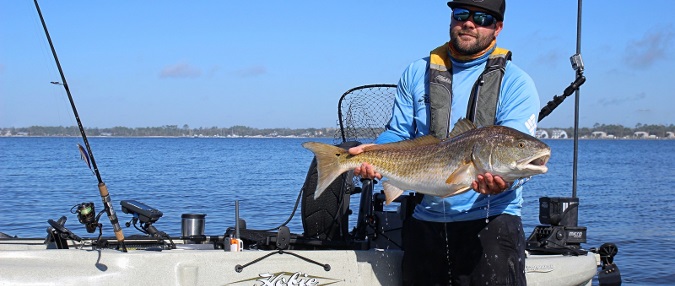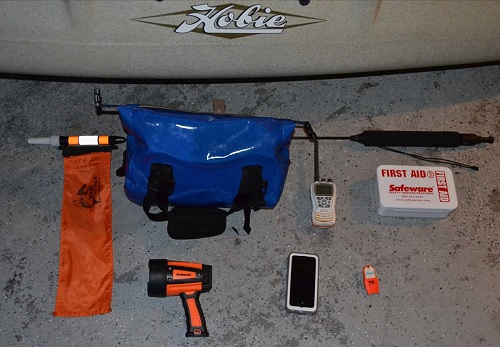
While fishing a bridge for bull reds at night in Pensacola Bay, a surprise lightning storm caught a friend and I on the water. We took shelter under the bridge. The storm winds whipped the seas up to a nasty three feet. We held tightly to the pilings as the conditions deteriorated. I was never so glad we’d prepared for the worst. Here are five tips that helped us ride out the storm.
1. We Were Wearing Our PFDs
If we’d been separated from our kayaks during the height of the storm, our PFDs would have saved our lives, period. Choose a PFD that is comfortable to wear all day. Non inflatable PFDs are the safest but can be bulky and hot. Auto Inflatable and manual inflatable PFDs are a great option and can be very comfortable while fishing out on the kayak. The only down side to them is the auto inflate can be activated from taking waves over the kayak or a simple turtle of the ‘yak. The manual inflatable downside is if you somehow become unconscious you won’t be able to pull the cord. Try out different PFDs and choose one that fits you and your conditions.
2. We’d Filed a Float Plan
Making a float plan is great way to ensure a safe return when planning a fishing trip on the kayak. I always tell someone I trust to notify the Coast Guard or other authorities in the event I suffer an emergency on the water and don’t return. Tell them your launch and return locations, and give your launch and arrival times. Letting them know what kayak type and its color and who will be out with you is important. Also let them know you plan on taking your cell phone and VHF radio with you and the radio channel you will be on. Float plans help speed up recovery efforts in the event of an emergency. The storm broke before we were reported missing. If it hadn’t, help would have been on the way.

3. We Used the Buddy System
If we’d gotten into trouble during the storm we could have aided each other. It is always important to go out with a buddy especially when fishing new waters or venturing on a long trip. The buddy system not only gives you some company on the water but also gives you a little extra insurance in case something happens on the water. Make sure your buddy also has shared his float plan with someone and this will ensure you have taken every precautious you can. It also helps having a buddy with you on the water to get those sweet fish pictures.
4. We Carried a Few Safety Essentials
A VHF radio is must while on the water. Know what channel to contact the Coast Guard and the proper way to communicate with them. A cell phone is great to bring along in a dry box or bag as a backup communication device. Make sure you have it fully charged before your trip. A whistle is an important signaling device and it is the law to have one at all times on the kayak. A 360-degree white light is also required while kayak fishing at night or even during low light. I also like to bring a bright flashlight or spotlight to flash at oncoming boaters to let them know I am there. A small first aid kit is another item that can be stashed away in a hatch or a dry bag for those emergency situations.
5. We Knew Our Limits
Knowing your personal limits and your kayak’s limits is one of the most important steps for having a safe and fun day while on the water. I trusted my Hobie® Mirage Outback could handle the waves and swells that were pounding that night under the bridge. I also knew my physical strength could keep me holding on to that piling until I could make it to safety. Don’t push your body and overdo it. Take a bunch of short trips till you figure out what your body and kayak can handle.
Check back weekly for new videos and stories by the 2016 Hobie Fishing Top Guns.
